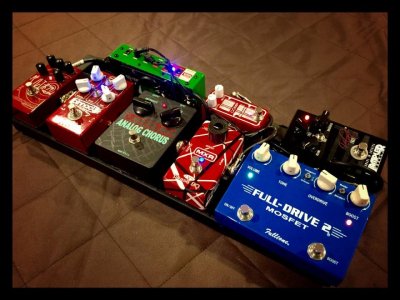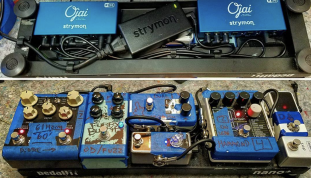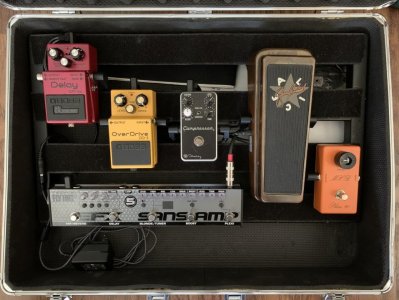alex1fly
Well-known member
Please tell me about your pedalboards! I see so many pedal boards that are huge, messy, and\or have spotty power and connections. So how do you all keep your cables tidy & secure, your power situation steady, and minimize the hassle of lugging the pedalboard itself around to rehearsals and whatnot?
Bonus points for achieving these goals without breaking the bank! What's worth the investment in quality (centralized power supply?) and what can you be cheap on?
Would love to see pictures too, but no pressure of course!
Bonus points for achieving these goals without breaking the bank! What's worth the investment in quality (centralized power supply?) and what can you be cheap on?
Would love to see pictures too, but no pressure of course!
Last edited:




